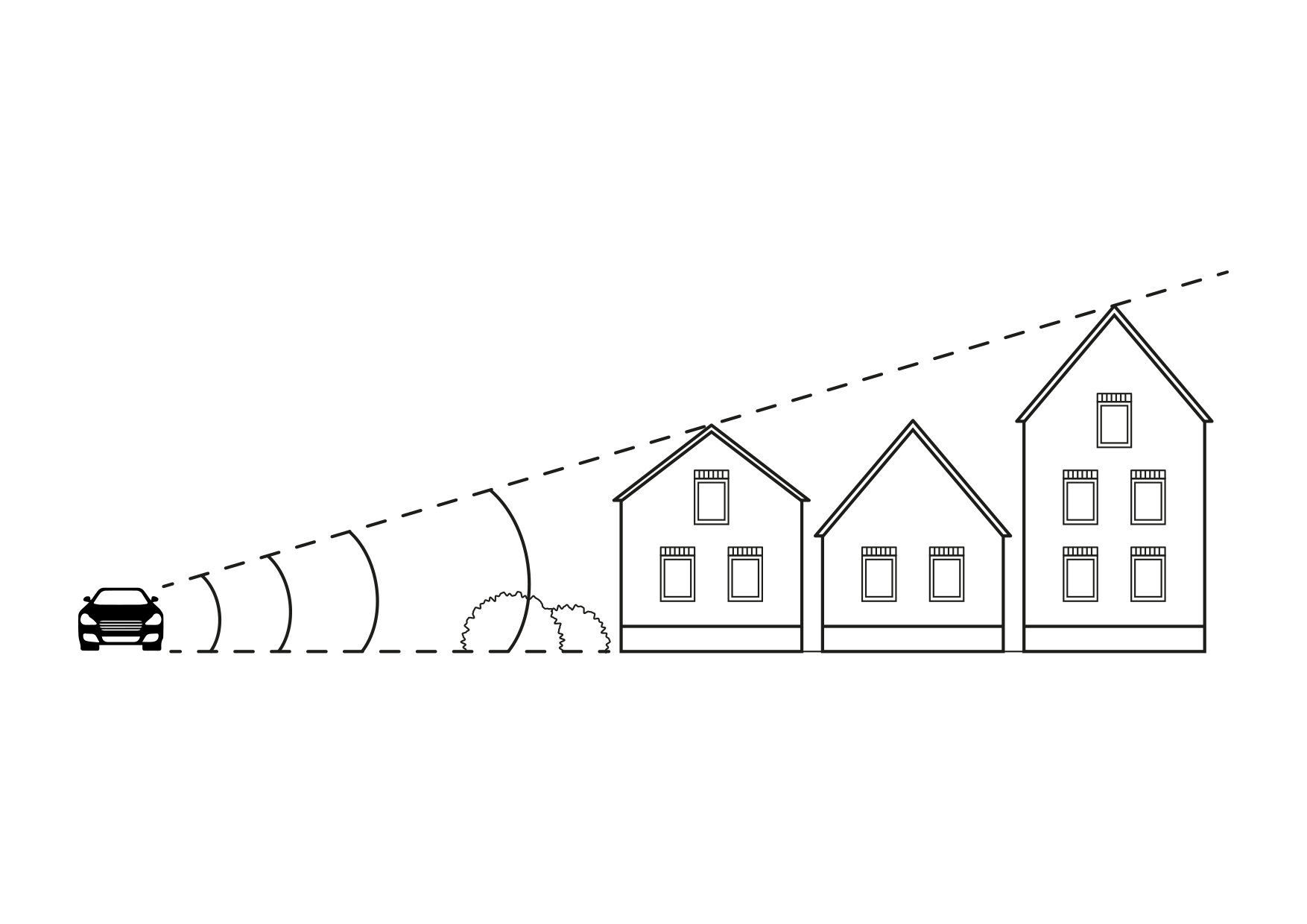Traffic noise formula (Traffic Noise Overlay)
The calculations for the Traffic Noise Overlay follow the standard rekenmethode 1 (SRM 1), as described on http://wetten.overheid.nl/BWBR0031722/2015-07-01#BijlageIII:
where:
- = equivalent noise level (dB(A))
- = emission
- = Traffic noise formula (Traffic Noise Overlay)#acceleration term on intersections (default = 0 dB(A))
- = reflection term. This term is not used, and by default 0 dB.
- = distance reduction
- = air reduction (default = XXX dB(A))
- = surface reduction. This term is not used, and by default 0 dB.
- = meteorological reduction (default = XXX dB(A))
- = distance from the receiver to the source.
- = Euler's number, approximated as 2.7182.
- = Building datum height (DTM) of the noise source
- = Building datum height (DTM) of the noise receiving cell.
Default values are taken from InfoMil [1]
Acceleration term on intersections
Accelerating on intersections can cause more noise. This value is only calculated for roads of category INTERSECTION. It is calculated as followed:
Distance reduction
Distance reduction is computed as:
where:
- = shortest distance between the source and point of evaluation
Notes
- If the traffic amount is defined as a single value, that value is used for all defined hours. However, if the amount if an array of values, each of the 24 indexes of that array are assumed to correspond to the hour denoted by those indexes, and as such that specific value from the array is used.
See also
References
- The overlay calculations are based on Standard Calculation Method 1 (SRM1) as defined by the dutch government: http://wetten.overheid.nl/BWBR0031722/2015-07-01#BijlageIII


















